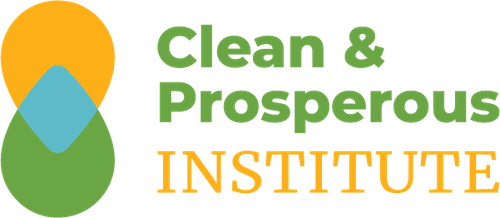Can we replace gasoline with hydrogen as a transportation fuel?
Lesson # 7 Hydrogen fueling stations are on the rise in California
Clean & Prosperous Institute led our second study mission to California last month, which took us from Sacramento to San Francisco to Silicon Valley. We learned so much from briefings and site tours that we want to continue sharing highlights here. (If you missed Lesson #1, about dairy digesters, click HERE. If you missed Lesson #2, about reducing emissions in overburdened communities, click HERE. If you missed Lesson #3, about how public investments from carbon revenues are catalyzing private sector innovation and investment, click HERE. If you missed Lesson #4, about how we can accelerate the adoption of EVs, click HERE. If you missed Lesson #5, about battery innovations, click HERE. If you missed Lesson #6, about clean fuels, click HERE.)

King County Executive Dow Constantine at Sacramento hydrogen fueling station. Photo Credit: Lee Keller
What we learned
On our trip we got to see what a typical hydrogen fueling station looks like. At Shell and Iwatani hydrogen fueling stations, we watched the fueling of a Toyota Mirai and Hyundai Nexo. While it looked very similar to a conventional gas pump, the difference is that hydrogen gas, rather than liquid gas, is flowing into the vehicles, where it then is converted in fuel cells into electricity to power the car.
From Drive Clean CA, here’s how hydrogen-fueled vehicles work:
“Fuel cell cars are powered by compressed hydrogen gas that feeds into an onboard fuel cell ‘stack’ that doesn’t burn the gas, but instead transforms the fuel’s chemical energy into electrical energy. This electricity then powers the car’s electric motors. Tailpipe emissions are zero, and the only waste produced is pure water.” Here’s a quick video.
Today there are 56 hydrogen stations available in CA, with 118 new stations in development.
We also learned about the work of the California Fuel Cell Partnership. Founded in 1999, the California Fuel Cell Partnership is an industry/government collaboration aimed at expanding the market for fuel cell electric vehicles powered by hydrogen to help create a cleaner, more energy-diverse future with no-compromise zero emission vehicles. We saw a display of the Hyundai Fuel Cell Stack, Ballard stationary fuel cells, Nissan’s H70 tank, and an Air Liquide dispenser kiosk.
Bill Elrick, Executive Director of the California Fuel Cell Partnership said, “Twenty years ago, the California Fuel Cell Partnership started with a question: Can we successfully replace gasoline with hydrogen as a transportation fuel? The answer today is a resounding yes.”
Elrick went on to say that no single company or government entity could do this alone and that it needed the best scientists, engineers, policy experts and consumer specialists at the table. So, for two decades, this collaboration unfolded and today, thousands of hydrogen operated vehicles are on U.S. roads, with a large percentage of them being in California. And despite slight setbacks because of COVID, California’s goal is still to have 200 hydrogen fueling stations operational by 2025 and 1,000 of them by 2030.

California Fuel Cell Partnership headquarters; Photo Courtesy CFCP


Clean & Prosperous Institute Research Director Kevin Tempest at CA Fuel Cell Partnership Demo Center
Photo credits: Lee Keller
Washington is well positioned to use our clean electricity to produce green hydrogen and there are ample opportunities for green hydrogen to displace diesel usage in trucking and maritime sectors. Providing the infrastructure, however, is key to market development. The state of Washington has invested in two hydrogen fueling stations to date, one in Wenatchee and the other in Lewis County.
As we use Climate Commitment Act revenues to invest in decarbonization solutions for our transportation system, hydrogen infrastructure should be expanded. We saw firsthand how a retail network of stations can provide a quick fueling experience for zero emission vehicles. Applications for medium and heavy duty vehicle fueling will also help us meet our carbon reduction goals.
CORRECTION:
In our 5/13 newsletter on plans by Australia’s Fortescue Future Industries to invest in a new green hydrogen production facility at the site of a reclaimed coal mine near Centralia, we wrote that the plant would produce 15 million tons of green hydrogen per year. According to Mining Connection, the Centralia facility is “rumored to be targeting production of 110 tonnes of green hydrogen a day from the plant, equal to 40,000 tonnes per year”.

